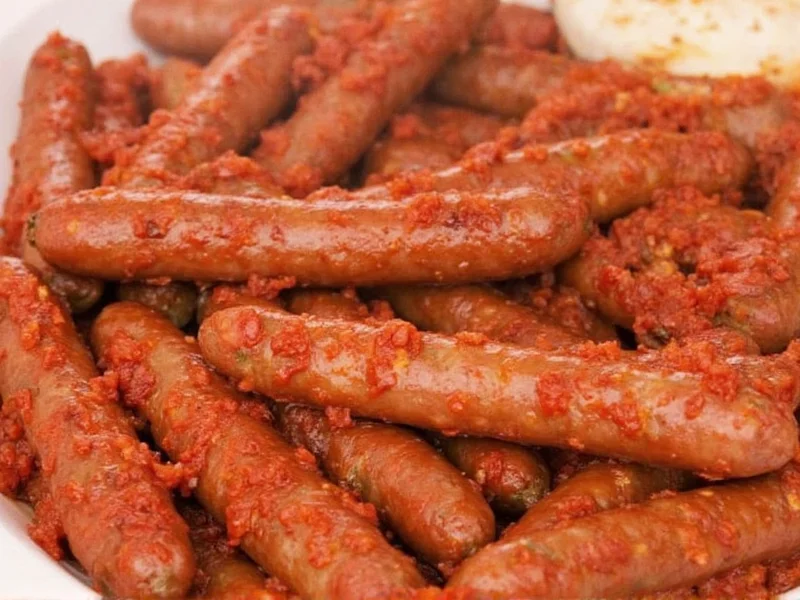Italian sausage's rich blend of fennel, garlic, and spices makes it one of the most versatile proteins in your kitchen. Whether you have sweet or hot varieties on hand, this flavorful ingredient can transform simple ingredients into restaurant-quality meals in under 30 minutes. Understanding how to maximize its potential opens up countless culinary possibilities across all meal categories.
Breakfast Creations with Italian Sausage
Start your day with protein-packed breakfast options that go beyond basic scrambled eggs. Crumble Italian sausage into breakfast casseroles with potatoes, cheese, and vegetables for a hearty weekend brunch. For weekday mornings, try sausage and pepper hash browns—simply brown sliced potatoes with diced bell peppers, onions, and crumbled sausage. The fennel in Italian sausage complements eggs perfectly, making it ideal for frittatas and quiches.
Lunchtime Italian Sausage Solutions
For satisfying midday meals, Italian sausage elevates standard lunch options. Create a gourmet sandwich by pairing grilled sausage links with caramelized onions, roasted peppers, and provolone on a crusty roll. Transform your salad with warm Italian sausage slices over mixed greens, cherry tomatoes, and balsamic vinaigrette. Soup lovers will appreciate Italian sausage's role in minestrone, where it adds depth to the vegetable broth while providing satisfying protein.
Dinner Recipes Featuring Italian Sausage
Dinner possibilities with Italian sausage are virtually endless. The classic Italian sausage and peppers combines sliced sausage with bell peppers and onions in a simple pan-fry that serves as both main course and side dish. For pasta nights, remove sausage from casings and brown with garlic, then toss with cooked pasta, cherry tomatoes, and fresh basil. Baked ziti with Italian sausage offers a comforting casserole option, while stuffed mushrooms with sausage and breadcrumbs make an impressive appetizer or side.
| Recipe Type | Prep Time | Key Ingredients | Best Served With |
|---|---|---|---|
| Spicy Arrabbiata Pasta | 20 minutes | Hot Italian sausage, tomatoes, red pepper flakes | Garlic bread, green salad |
| Sausage and Kale Soup | 35 minutes | Sweet Italian sausage, kale, cannellini beans | Crusty bread, grated Parmesan |
| Stuffed Bell Peppers | 45 minutes | Italian sausage, rice, tomatoes, cheese | Simple green salad |
| Sausage Pizza | 25 minutes | Crumbled Italian sausage, mozzarella, tomato sauce | Arugula salad with lemon dressing |
Cooking Methods for Italian Sausage
Different cooking techniques yield distinct results with Italian sausage. Pan-frying works best for sliced links or crumbled sausage, creating a delicious browned exterior while keeping the interior juicy. Baking in the oven at 375°F allows fat to render evenly, ideal for stuffed dishes or when preparing multiple links. Grilling imparts smoky flavor, perfect for sausage sandwiches. For soups and stews, simmering sausage in the broth infuses the entire dish with flavor without drying out the meat.
Flavor Pairings That Enhance Italian Sausage
Understanding complementary flavors helps create balanced dishes. The fennel in Italian sausage pairs beautifully with:
- Acidic elements: Tomatoes, lemon juice, or balsamic vinegar cut through the richness
- Sweet vegetables: Bell peppers, onions, and squash balance the savory notes
- Leafy greens: Kale, spinach, or broccoli rabe add freshness
- Starchy bases: Pasta, polenta, or potatoes provide satisfying texture contrast
Essential Cooking Tips for Perfect Italian Sausage
Follow these professional kitchen techniques for optimal results. Always prick sausage links with a fork before cooking to prevent bursting. For crumbled sausage, remove from casings and cook in a cold pan, gradually increasing heat to render fat slowly. Never overcrowd the pan—this ensures proper browning rather than steaming. When using in pasta sauces, reserve some rendered fat to sauté vegetables for added flavor depth. Store uncooked Italian sausage in its original packaging in the coldest part of your refrigerator for up to two days, or freeze for longer storage.
Three Standout Italian Sausage Recipes
1. One-Pan Sausage and Peppers: Slice 1 pound sweet Italian sausage into coins. Sauté with 2 sliced bell peppers and 1 large onion in 1 tablespoon olive oil over medium heat until golden (12-15 minutes). Season with salt, pepper, and 1 teaspoon dried oregano. Serve with crusty bread for soaking up juices.
2. Creamy Sausage and Mushroom Pasta: Brown 12 ounces crumbled Italian sausage, then remove from pan. Sauté 8 ounces sliced mushrooms and 3 minced garlic cloves until golden. Return sausage to pan, add 1 cup heavy cream and 1 cup grated Parmesan, then toss with 12 ounces cooked fettuccine.
3. Sausage and White Bean Soup: Brown 1 pound Italian sausage, then add 4 cups chicken broth, 2 cans cannellini beans (drained), 4 cups chopped kale, and 1 diced carrot. Simmer 20 minutes until vegetables are tender. Finish with lemon zest and fresh parsley.











 浙公网安备
33010002000092号
浙公网安备
33010002000092号 浙B2-20120091-4
浙B2-20120091-4